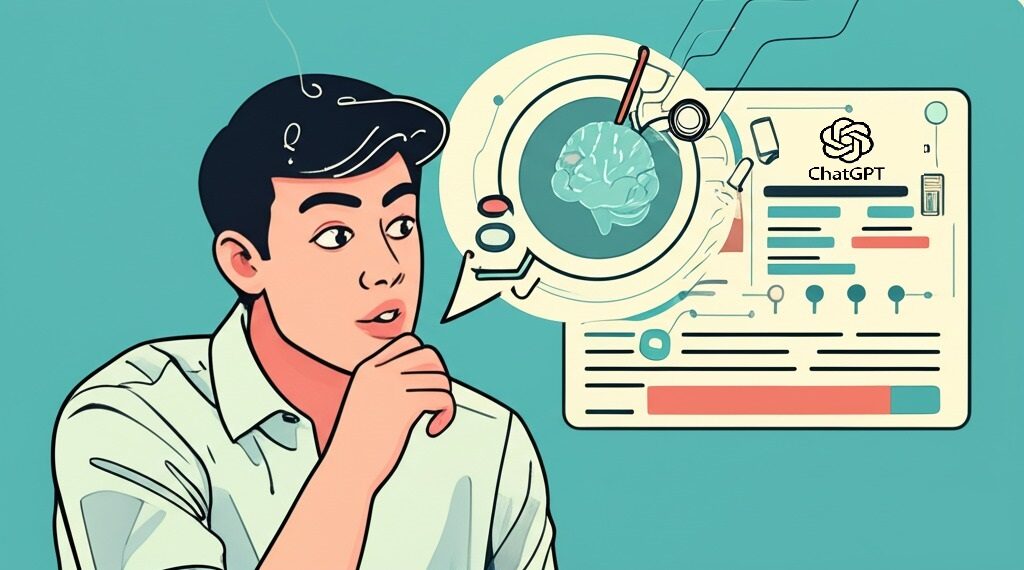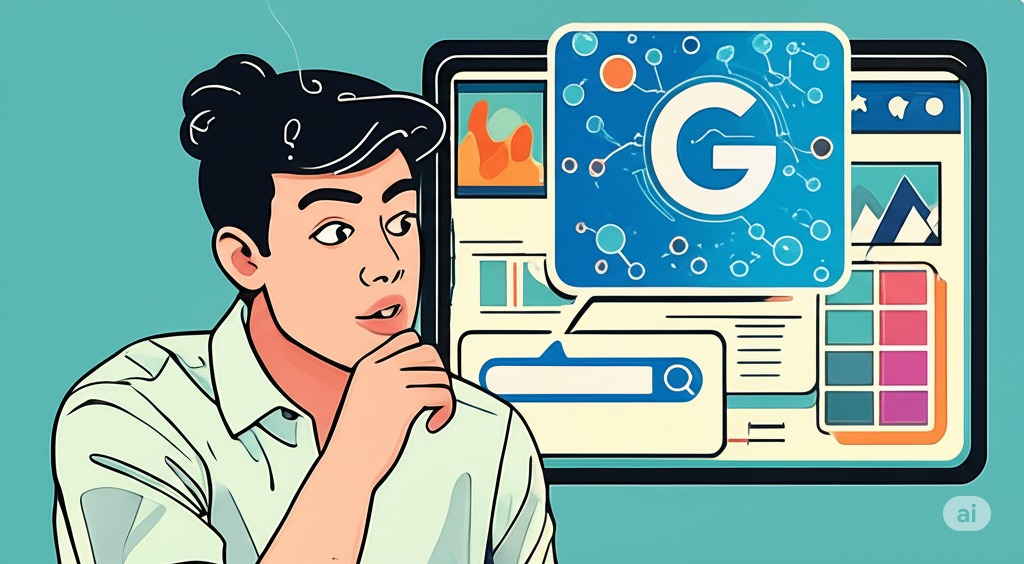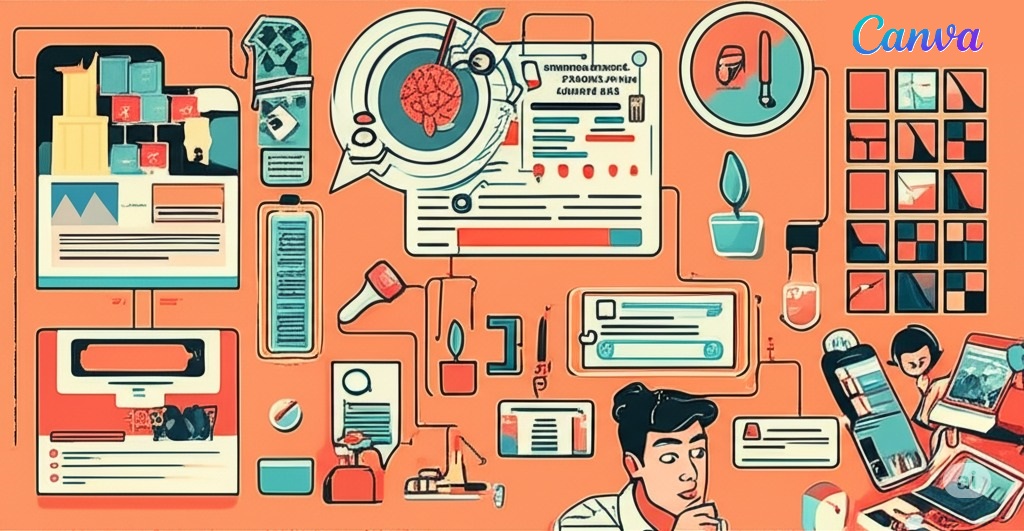Let’s be honest for a second.
The blank page is one of the most terrifying things in the world. It’s you versus a sea of white, and the pressure is on. You need to write a blog post. You need to come up with fresh ideas for your social media. You need a compelling image for your latest article. You need to do it all, and you needed it done yesterday.
This feeling, this “content treadmill,” is something every creator, marketer, and small business owner knows intimately. For years, the only solution was more coffee, more late nights, and the constant threat of burnout.
But now, in 2025, we have a co-pilot.
Artificial Intelligence has moved beyond a tech-bro buzzword and into our daily workflows. It’s no longer a novelty; it’s a utility. It’s the friendly assistant that never sleeps, never runs out of ideas, and is ready to help you turn that terrifying blank page into a finished, polished piece of content.
The problem? There are hundreds of AI tools out there, all screaming for your attention and your credit card details.
That’s why you’re here. This isn’t just another list. This is your practical, no-fluff guide to five genuinely free AI tools that will fundamentally change the way you create content in 2025. We’re going to dive deep into what they are, who they’re for, and exactly how you can use them today to create better content, faster.
Before We Dive In: Why AI is Your Unfair Advantage in 2025
The game has changed. It’s no longer just about creating content; it’s about creating high-quality, relevant, and engaging content at a consistent pace. Your audience is smarter than ever, and their feeds are more crowded than ever.
Here’s where AI steps in to give you an edge:
- It Obliterates Writer’s Block: AI idea generators can give you hundreds of potential topics, angles, and headlines based on a single keyword.
- It Accelerates Your Workflow: AI writers can draft outlines, write first drafts, summarise complex information, and repurpose a single blog post into a dozen social media updates. This isn’t about replacing you; it’s about doing the heavy lifting so you can focus on the creative, strategic parts.
- It Makes Visuals Accessible to Everyone: Don’t have a graphic designer on retainer? No problem. AI image generators can create stunning, unique visuals from a simple text description. No more scrolling through cheesy stock photos.
- It Personalises at Scale: AI can help you craft messages that speak directly to different segments of your audience, making your content feel more personal and impactful.
The key is to think of these tools not as replacements for human creativity, but as powerful collaborators. They handle the mechanics, so you can handle the magic.
Now, let’s meet your new content creation team.
Tool #1: The Brainstorming Partner & Wordsmith – ChatGPT (by OpenAI)
If you’ve heard of only one AI tool, it’s probably this one. By 2025, ChatGPT will be as common as a word processor. But many people still only scratch the surface of what its free version can do.

What is it?
ChatGPT is a conversational AI language model. In simple terms, you talk to it, and it talks back. But its real power lies in its ability to understand context, generate human-like text, and perform a staggering variety of language-based tasks.
Who is it for?
Bloggers, copywriters, social media managers, students, developers… honestly, anyone who works with words.
The “Wow” Factor of the Free Plan:
The free version of ChatGPT (powered by the GPT-4o model as of 2025) is incredibly robust. While the paid version offers access to newer models and higher usage limits, the free tier is more than enough to supercharge your content creation. It can browse the web for real-time information, analyse data, and even look at images you upload.
Practical Use Cases for Content Creators:
- The Idea Factory: Instead of just asking for “blog post ideas,” get specific.
- Prompt: “I run a blog for beginner gardeners in urban apartments. Give me 10 blog post titles that address common problems they face, framed as ‘how-to’ guides.”
- The Outline Architect: A great article starts with a great structure.
- Prompt: “Create a detailed blog post outline for the topic ‘5 Common Mistakes New Freelancers Make’. Include an introduction, a section for each mistake with 3-4 talking points, and a conclusion with actionable advice.”
- The First Draft Specialist: Never start from a blank page again.
- Prompt: “Write a 300-word introduction for a blog post titled ‘The Ultimate Guide to Sustainable Travel’. The tone should be inspiring and slightly adventurous. Address the reader directly and mention the desire to see the world without harming it.”
- The Repurposing Machine: This is one of its most powerful uses.
- Prompt: “I’ve written a blog post about the benefits of intermittent fasting. Turn the key points into 5 separate, engaging tweets. Include relevant hashtags. Now, write a short, punchy script for a 30-second Instagram Reel based on the same post.”
- The Social Media Guru:
- Prompt: “Write a LinkedIn post announcing my new article on ‘AI in Project Management’. The tone should be professional and insightful. Ask a question at the end to encourage comments.”
Mini-Review & Verdict:
ChatGPT is the undisputed Swiss Army knife of AI writers. It’s versatile, powerful, and shockingly intuitive. The quality of your output depends almost entirely on the quality of your input (your “prompt”). Learning to converse with it, providing context, and asking it to adopt a certain persona will yield results you won’t believe are free. It’s an essential, non-negotiable tool for every content creator.
Link: chat.openai.com
Tool #2: The Instant Graphic Designer – Microsoft Designer
Tired of seeing the same stock photos everywhere? Don’t have the budget for a graphic designer or the time to learn Photoshop? Microsoft Designer is your new best friend.

What is it?
Microsoft Designer is a web-based graphic design app that integrates a powerful AI image generator (powered by the latest DALL-E models). It allows you to create social media posts, invitations, blog headers, and more, just by describing what you want.
Who is it for?
Small business owners, social media managers, bloggers, and anyone who needs high-quality visuals without a steep learning curve.
The “Wow” Factor of the Free Plan:
The core “describe your design” feature is free. You also get a generous number of free image generation “credits” each month. For 2025, Microsoft has deeply integrated this into its entire ecosystem, making it seamless to use. The key differentiator is that it doesn’t just give you an image; it often places that image directly into a suggested design template, saving you even more time.
Practical Use Cases for Content Creators:
- Instant Blog Headers: You’ve written a great article; now it needs a great hero image.
- Prompt: “Create a blog header image for an article called ‘The Future of Remote Work’. I want a minimalist aesthetic, with a person working on a laptop on a beautiful, serene balcony overlooking a futuristic city. The style should be photorealistic.”
- Unique Social Media Graphics: Stop the scroll with images no one has seen before.
- Prompt: “An Instagram post to promote a new coffee blend called ‘Rocket Fuel’. I want a vibrant, colourful flat lay image featuring a coffee cup with a small, cute rocket ship flying out of it, surrounded by coffee beans. Make it look like a professional photo.”
- Visualising Abstract Concepts: Some ideas are hard to find stock photos for.
- Prompt: “A symbolic image representing ‘data privacy’. I’m thinking of a transparent shield protecting a glowing digital fingerprint. The background should be dark blue and futuristic.”
- Quick Ad Creatives:
- Prompt: “A Facebook ad graphic for a yoga studio’s summer sale. Show a diverse group of people doing yoga in a bright, sunlit park. Add a text overlay that says ‘Summer Yoga Sale – 50% Off’.” Microsoft Designer will not only create the image but also suggest layouts for the text too.
Mini-Review & Verdict:
While other AI image generators can be more complex and artistic (like Midjourney), Microsoft Designer wins on pure simplicity and practicality. It’s built for the busy creator who needs a good-looking, relevant image right now. The integration of image generation with actual design templates is a game-changer. It lowers the barrier to creating a professional-looking brand online to practically zero. For social media and blog content, it’s an absolute must-have.
Link: designer.microsoft.com
Tool #3: The Unending Idea Fountain – Google’s AI-Powered Search
Sometimes, the hardest part is just figuring out what to talk about. You need to find topics that people are actually searching for. In 2025, your best idea generator is the tool you already use every day: Google Search, now supercharged with AI.

What is it?
This isn’t a standalone tool but a feature baked right into Google Search. Known by various names like “AI Overviews” or “Search Generative Experience (SGE),” this is Google using its own AI to directly answer complex questions and provide content ideas right on the results page.
Who is it for?
SEO specialists, content strategists, bloggers, and anyone looking to create content that ranks well and serves user intent.
The “Wow” Factor of the Free Plan:
It’s Google—it’s free. The “wow” factor is that you’re getting topic and keyword ideas directly from the source. Google is telling you exactly what questions people are asking and what related topics they’re interested in. This is pure strategic gold.
Practical Use Cases for Content Creators:
- Discovering Topic Clusters: Instead of just one keyword, you can plan a whole series of articles.
- Search Query: “How to start a podcast for beginners?”
- AI Overview Result: The AI won’t just give you a link. It will synthesise information and create a mini-guide with sections like “Choosing a Topic,” “Essential Equipment,” “Recording & Editing Software,” and “Marketing Your Podcast.” Each of these is a potential blog post.
- Finding “People Also Ask” Gold: The “People Also Ask” section is a goldmine, and the AI Overviews often include a “Follow-up questions” feature.
- Search Query: “Best vegan protein sources”
- AI Follow-up Questions: You’ll see questions like “How can vegans get B12?”, “Is pea protein a complete protein?”, “What are the side effects of too much soy?”. These are long-tail keywords and content ideas handed to you on a silver platter.
- Comparative Content Ideas: Use “vs” or “or” queries to get ideas for comparison articles.
- Search Query: “Canva or Adobe Express for social media?”
- AI Overview Result: Google’s AI will generate a comparison table highlighting the pros and cons of each, their key features, and pricing. This gives you the exact structure for a high-value comparison post that your audience is looking for.
Mini-Review & Verdict:
Using Google’s AI-powered search for ideation is the ultimate “work smarter, not harder” strategy. You’re leveraging the world’s most powerful search engine to understand your audience’s pain points and curiosities. Before you write a single word, you can validate your ideas and build a content strategy that is virtually guaranteed to be relevant. It’s not a flashy app, but it might be the most powerful and practical tool on this entire list.
Link: google.com (Just use it like you normally would, and pay attention to the AI-generated answers at the top of the page).
Tool #4: The All-in-One Content Studio – Canva
If ChatGPT is the Swiss Army knife, Canva is the entire workshop. By 2025, Canva will have evolved from a simple design tool into an integrated content creation platform, with a powerful suite of AI tools built right in.

What is it?
Canva is a user-friendly online design platform that allows you to create everything from social media graphics and presentations to videos and print documents. It’s “Magic Studio” brings together a collection of AI tools to assist in this process.
Who is it for?
Literally everyone. From students making a presentation to marketing teams at Fortune 500 companies. Its free plan is legendary for a reason.
The “Wow” Factor of the Free Plan:
Canva’s free plan is one of the most generous in the tech world. You get access to thousands of templates, a vast library of free photos and elements, and, crucially, a limited but substantial number of credits for their AI “Magic” features.
Practical AI Use Cases within Canva (Magic Studio):
- Magic Write (AI Writer): It’s like having a mini-ChatGPT right inside your design.
- Use Case: You’ve designed a beautiful Instagram carousel. Instead of writing the text separately, you can use Magic Write directly in the text box.
- Prompt: “Write a short, inspiring caption for this Instagram post about achieving fitness goals. Use emojis.”
- Magic Media (AI Image & Video Generator): This is Canva’s version of an AI image generator, similar to Microsoft Designer but built into your Canva workflow.
- Use Case: You’re creating a presentation about space exploration and need a specific image.
- Prompt: “A photorealistic image of an astronaut planting a flag on Mars, with Earth visible in the sky.” The image is generated, and you can drop it directly onto your slide.
- Magic Switch (Repurposing Tool): This is pure AI magic.
- Use Case: You’ve just finished a presentation (a “Doc”). With one click, Magic Switch can transform it. It will pull out the key points and instantly create a blog post, a summary, an email, or even a series of social media posts, all formatted correctly. This is content repurposing on steroids.
- AI-Powered Background Remover: A classic but essential tool. Click a button, and the background of your photo is gone, ready for you to place on any design.
Mini-Review & Verdict:
The power of Canva is its integration. You no longer need to generate an image in one tool, download it, and then upload it to another tool to add text. On Canva, you can have an idea, use Magic Write to flesh it out, use Magic Media to create a visual for it, and use Magic Switch to repurpose it for every platform, all without ever leaving a single browser tab. The free plan gives you more than enough power to see a massive boost in productivity. It is the central hub of a modern content creator’s toolkit.
Link: Canva.com
Tool #5: The Effortless Video & Audio Assistant – Veed.io
Video is king, but it’s also time-consuming and technically challenging. Or at least, it used to be. Tools like Veed.io are using AI to democratize video creation, making it as easy as editing a text document.

What is it?
Veed.io is an online video editing platform designed for speed and simplicity. It’s packed with AI features that automate the most tedious parts of video production.
Who is it for?
Marketers, course creators, YouTubers, and anyone who wants to create short-form video content (Reels, TikToks, Shorts) or simple explainer videos without complex software.
The “Wow” Factor of the Free Plan:
Veed’s free plan lets you create and export videos (with a small watermark). Crucially, it gives you access to its game-changing AI features like automatic subtitling and audio cleaning. This alone is worth its weight in gold.
Practical Use Cases for Content Creators:
- AI Subtitles: A huge percentage of social media videos is watched with the sound off. Manually transcribing and timing subtitles is a nightmare.
- How it works: Upload your video. Click “Auto Subtitle.” The AI listens to your audio and generates timed subtitles in seconds. You can then easily review and edit any mistakes.
- AI Eye Contact Correction: This is a futuristic feature available in 2025.
- How it works: Let’s say you were reading from a script and your eyes weren’t always on the camera lens. The AI can subtly adjust your pupils so it looks like you’re maintaining perfect eye contact with the viewer, dramatically increasing engagement.
- AI Background Noise Removal: Recording in a less-than-perfect environment?
- How it works: With one click, Veed’s AI can identify and remove background noise like traffic, fans, or echo, leaving you with clean, crisp audio.
- AI Text-to-Speech & Voice Cloning (Limited on Free Plan):
- How it works: Don’t want to use your own voice? Type a script, choose an AI voice, and it will generate the voiceover for you. Some plans even allow you to create a clone of your own voice for consistent narration.
Mini-Review & Verdict:
Veed.io solves the biggest pain points in simple video production. The automatic subtitling is a non-negotiable feature for anyone posting video on social media. The ability to quickly clean up audio and make simple edits in a browser is incredibly freeing. While the free plan’s watermark is a drawback, it’s a small price to pay for the immense amount of time and effort you save. It’s the perfect tool for creating the short-form video content that dominates social feeds in 2025.
Link: veed.io
A Final Word: The Human Element is Your Secret Weapon
We’ve just covered five incredible tools that can brainstorm, write, design, and produce content for you. It’s easy to get excited and think you can just press a button and let the robots do all the work.
Please don’t.
The biggest mistake you can make in the age of AI is to sound like everyone else using AI. These tools are powerful, but they lack one critical thing: you.
They don’t have your unique voice, your personal stories, your niche expertise, or your sense of humour. They can’t build a genuine connection with your audience.
Use these tools as your first-draft creators, your brainstorming buddies, and your tireless assistants.
- Let ChatGPT write the outline, but you add the personal anecdote that makes it relatable.
- Let Microsoft Designer create the image, but you choose the prompt that perfectly matches your brand’s style.
- Let Veed.io add the subtitles, but you deliver the message with authentic passion.
The future of content creation isn’t about human vs. AI. It’s about human plus AI. By embracing these free, powerful tools, you’re not cutting corners; you’re clearing the path. You’re freeing up your time and mental energy to focus on what truly matters: creating content that is authentic, valuable, and uniquely human.
Now go on. That blank page isn’t so scary anymore, is it?